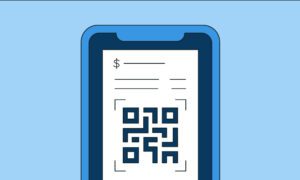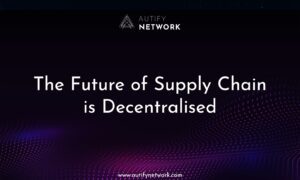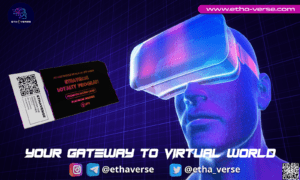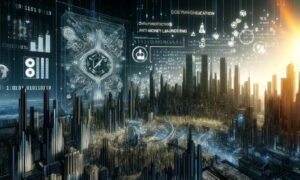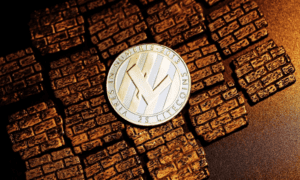Matrix AI Network is one of the most innovative blockchain and AI projects to watch. Steve Deng, Chief AI Scientist of Matrix AI Network will be giving us an update on the Matrix AI project in this interview.
Please tell us about yourself and your journey so far at Matrix?
My vision for creating Matrix AI Network is to build a platform that solves the chronic shortage of computing resources available for AI—in particular for research and social good. I think generally we have inaccurate sense of how pervasive big data and AI currently are. Within some limited social, public sector, and business applications there is considerable scale for data and AI; but we’re still far from a really transformative tipping point where AI realizes a much greater potential to improve lives.
In early talks with our Chief Network Architect, Bill Li, we realized that if we built a robust enough blockchain platform that could rival the security, speed, and performance of current enterprise technology systems, we could overcome two of the biggest barriers slowing AI’s growth. In order to run useful applications and get meaningful scale and adoption, we knew our platform would have to match current end-to-end solutions that big tech has for the data supply chain.
Our innovations focus on two big areas for helping AI scale. The first, was creating value-added green mining for blockchain that would help power under-supported forms of AI research in a sustainable fashion. The second, was to increasing the quality and scope of data for AI by creating a hybrid infrastructure with the security, functionality, and interoperability to bridge public and private data ecosystems. I’ll talk more about the details below.
MATRIX AI Network aims to be an Easier, Faster, Safer Blockchain 3.0, what does this mean and what is your success story so far?
Without speculating on what “blockchain 3.0” may have signified to people, the fact is from the very beginning we designed Matrix to be an open-ended self-evolving system.
Our multi-chain architecture uses AI methods like generative adversarial networks (GANs) to continuously simulate attacks and exploitation of the network and identify and patch potential bugs and loopholes. GANs are also used in our multi-chain architecture to dynamically optimize parameter selection across different chains evolving new configurations best suited to real-world behavior on different chains. This is an important AI supported capability to prevent forking.
An important part of making our blockchain easy for users and partners, is making the AI run behind the scenes. One example is our auto-coding smart contracts that use natural language processing to provide users structured templates for blockchain transactions based on simple text input in English or Chinese. Behind the simple user interface is a semantic and syntactic analysis engine, formal verification, AI-based transaction model identification, and a deep learning platform for system-wide evolution. AI verification in secure gateways is also important for our secure enterprise-grade interoperability between systems.
What is MATRIX’s consensus mechanism and at what stage of development is the project?
Our hybrid PoS/PoW consensus enables high volume on-chain throughput by taking advantage of a stochastic clustering algorithm. We’ve currently demonstrated 5,000 transactions per second with full encryption over the blockchain network, which already surpasses the volume of many of the world’s most active global transactions networks.
First, we use “staking” and precautions in registration as a first line of defense ensuring that participants are invested in the health of the ecosystem. Second, we use a randomized clustering algorithm to dynamically create a delegate network for a limited election cycle. This makes collusion nearly impossible structurally, and also limits the time for any given delegated cluster to work together. Furthermore we have additional validation nodes overseeing the process.
In terms of the stage, with the release of our mainnet, we believe our platform ranks among the most advanced of any public or permissioned blockchain, and are now ramping up engagement with developers and projects worldwide to expand those capabilities. In terms of our roadmap to build out an increasingly advanced infrastructure for the next generation of AI, we feel it’s very early days. From the very beginning we designed Matrix as an open-ended evolving system.
While we designed the technology and organization to adapt and scale–our approach has also been systematic, pragmatic and optimized for flexibility. In fact we decided to develop a new blockchain protocol relatively late, and were even slower to release our mainnet, because we’ve taken time to closely learn from major flaws in security, governance, regulation and business models in the fledgling market.
Both Bill Li and I have worked as principal investigators on national level projects in telecoms and high-speed rail. I think this reflects a different design approach and understanding of how to integrate a wide range of complex systems with a near-zero threshold for error. We still see massive room for growth of the technology and the potential for the platform to accelerate the development of AI.
Tell us more about the Matrix Mainnet as an open source public intelligent blockchain platform.
Some phase one features of our Matrix mainnet include our AI server, which allows users to directly processes AI tasks over blockchain using a simple portal. The first wave of AI services includes our image recognition models that won first place in the 2017 PASCAL Visual Object Classes (VOC) challenge and 2017 Microsoft COCO international competitions. It also has pose detection, AI-assisted cancer diagnosis, and a 3-D model reconstruction of CT scans to diagnose rib fractures.
We’ve also introduced our green mining machine, which is an AI accelerator or FPGA optimized to run a popular subset of deep learning models, that also integrates with the blockchain consensus over the blockchain. In the past we’ve promoted MCMC, or Markov Chain Monte Carlo methods, which is one useful class of algorithms. In fact my Laboratory at Tsinghua Univeristy has developed the hardware, a Bayesian computer to accelerate the MCMC algorithm. One reason we’ve pivoted our focus to deep learning, is the practicality of MCMC being processed over a blockchain network, since verification of the results requires a lot of network bandwidth.
In addition our mainnet has flexible capabilities for DApps development, and integration with the interplanetary filing system (IPFS) and cloud storage options. We also support AI-powered industrial IoT applications integrating with ERP systems, production line management, and ticketing systems; for risk management, predictive analytics, visualization and reporting tools.
What can you tell us about your team and their efforts so far?
Matrix AI Network currently has over 75 full-time employees in our two offices in Beijing. I closely oversee three AI teams that work on specialized projects, as well as developing and expanding the AI-optimization built into every operation of our blockchain. We also have experts in base protocols for blockchain, cybersecurity, P2P computing, integrations like support for Docker application containers.
We have a team working on new architectures for WebAssembly, or Wasm, to update the ten-year old virtual machine technology. We’re looking at the great potential for AI and blockchain to expand nearly any code base with any device in the blockchain ecosystem at close to native speed. Before we see Wasm as fully market ready for use with AI and blockchain, we’re drawing on our team’s strengths in cybersecurity, interoperability, and hierarchical architecture to test out innovations.
We also have an in-house gaming team, our operations team in marketing, BD, implementation etc.
Who are your partners, what is the experience with the partners and do you have more opportunities for partners?
The partnerships I’m currently working on most actively is expanding several high-speed rail projects, which is an area that Bill Li and I have applied or are in the process of applying 30 patents for AI systems. An active focus building on our expertise and Matrix infrastructure is much more sophisticated industry 4.0, or industrial IoT networks, connected sensors, robotics, computer systems, AI models like computer vision for greater capabilities.
I’m also expanding collaborations for AI Assisted Medical Diagnosis with the Shanghai Pulmonary Hospital at Tongji University and Huadong Hospital at Fudan University. We provide the AI-powered blockchain management platform and we’re collaborating with doctors to contribute high-quality patient data from early screening, to CT imaging, to biopsy. We currently have the data of over 2,000 patients all labeled by the best doctors of China, and the partnership will be looking to expand that data pool.
For more information, visit https://www.matrix.io/
Join on Telegram: https://t.me/matrixainetwork
Follow on Twitter: https://twitter.com/MatrixAINetwork








